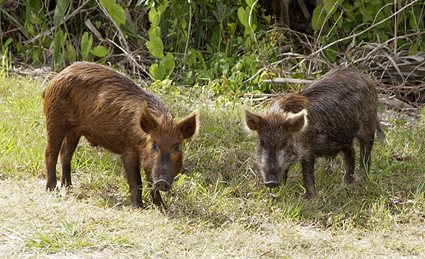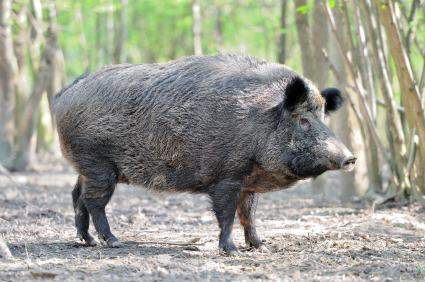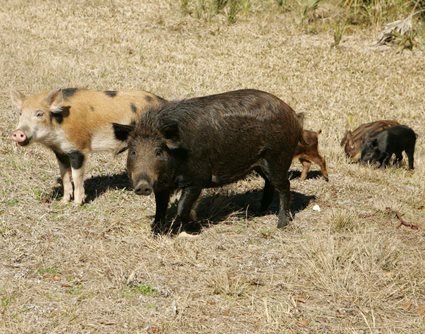Appearance of the Wild Hog
Standing nearly three feet tall, wild hogs have strong, stocky bodies that can grow over five feet in length. Males, known as boars, weigh over 200 pounds, while female sows are smaller at around 150 pounds. The invasive pests have scrunched faces, pointy snouts, beady eyes, and large ears. They can do considerable damage to lawns and vegetation with their ever-growing tusks, which must be perpetually ground down. An adult wild hog will have a thick coat of hair that varies in color from jet black or brown to white. The pests might also be speckled or spotted.

Wild Hogs on Private Properties
Like most other animals, wild hogs are always looking for water, food, and shelter. When rivers, lakes, and vegetation are abundant near properties, the pests will take full advantage of these resources. Homes close to marshy vegetation or dense patches of brush are ideal for a wild hog. Due to their thick fur coats, wild hogs do not usually look like domesticated pigs, which are typically pink and hairless.
Associated Problems
Not native to the United States, wild hogs disrupt the delicate balance of nature by eating everything in sight. They consume fragile wildlife like deer fawn and kid lambs in addition to endangered salamanders and ground-nesting birds. Property owners often become aggravated with their unrestrained rooting, as it creates deep holes in lawns and costs thousands in repairs. Garden vegetables and fallen acorns attract wild hogs to the yard, as well as pets like dogs and cats. To reduce wild hog numbers and reclaim control of your property, call Critter Control for professional assistance.

